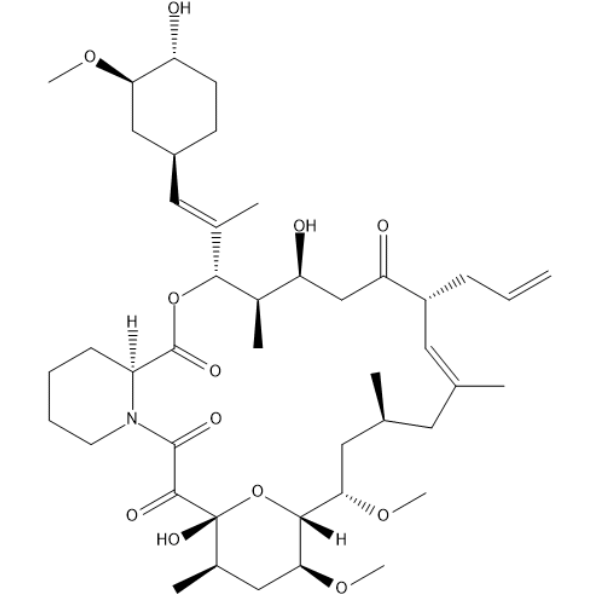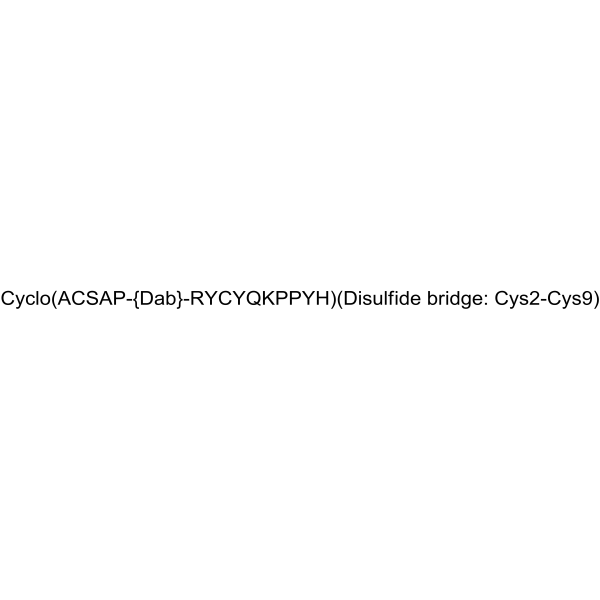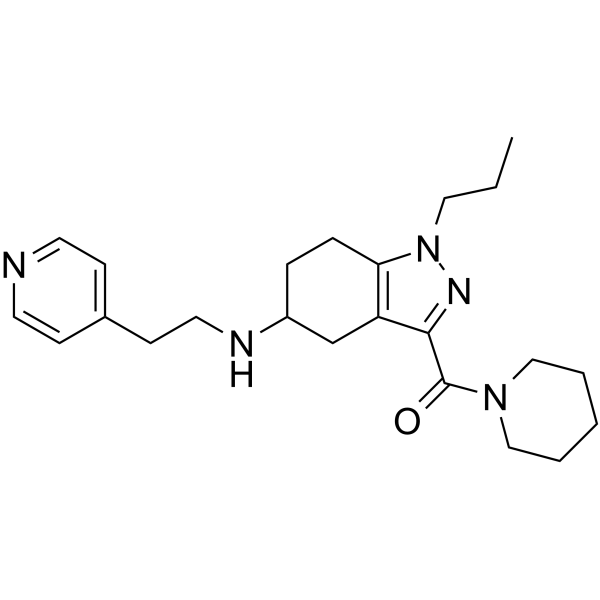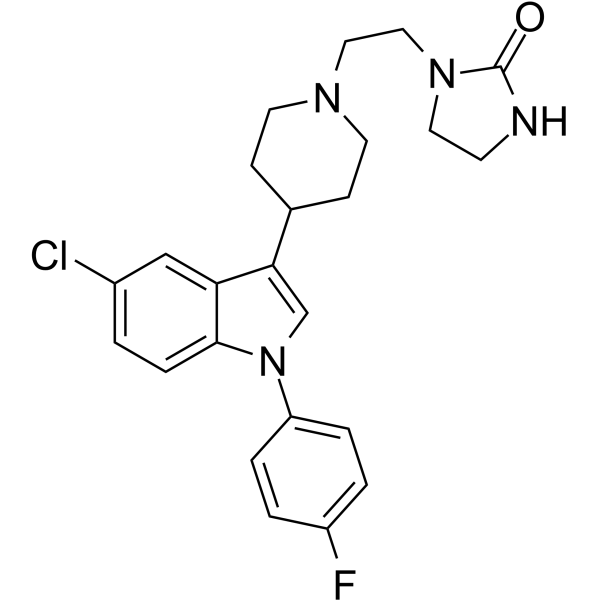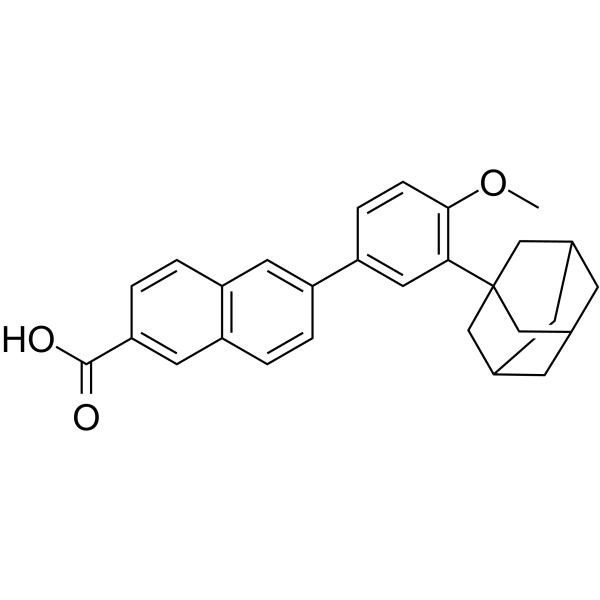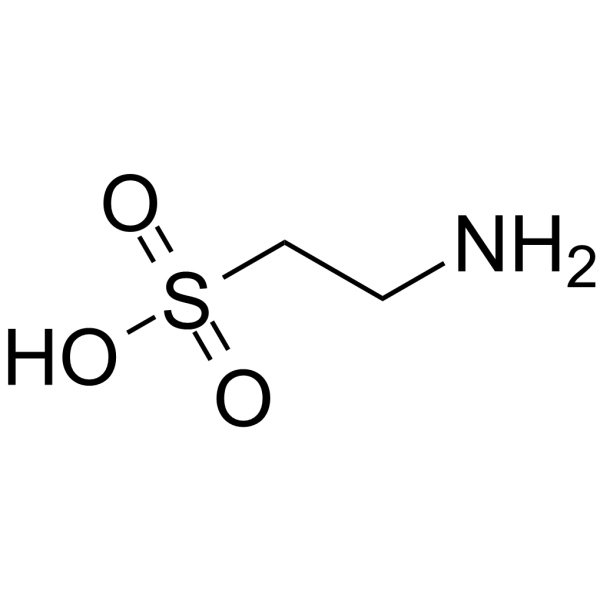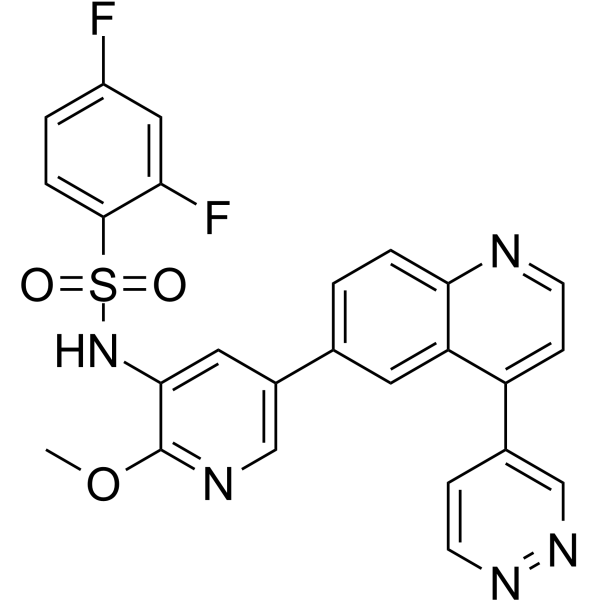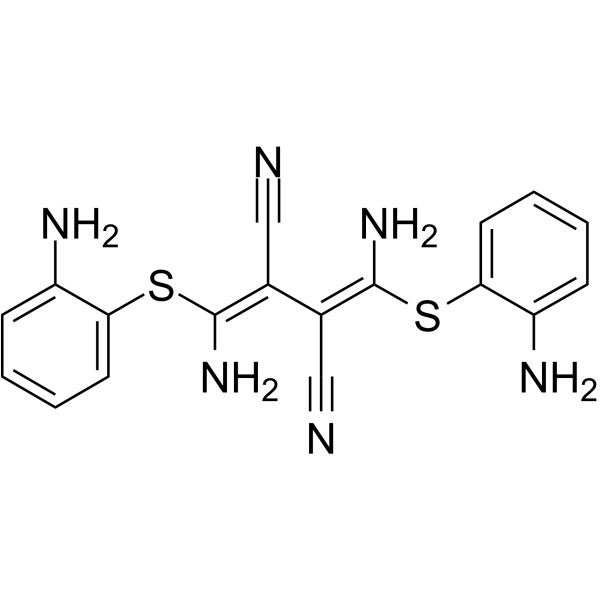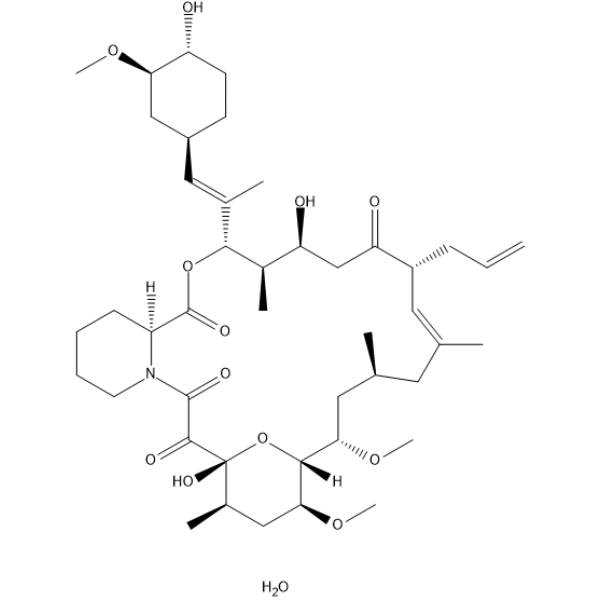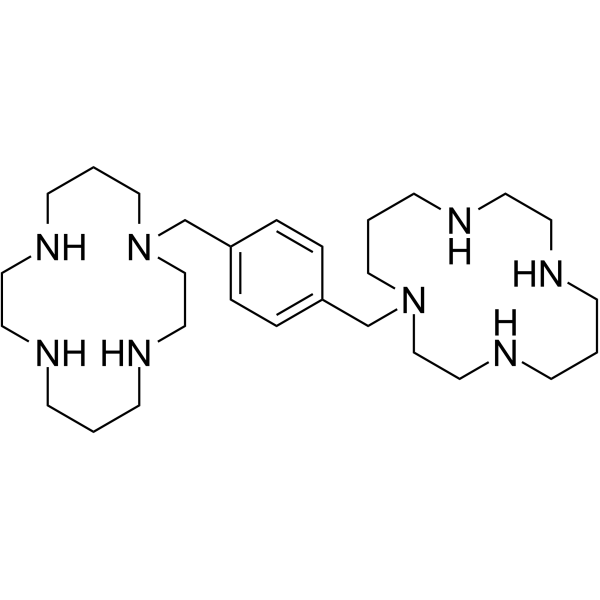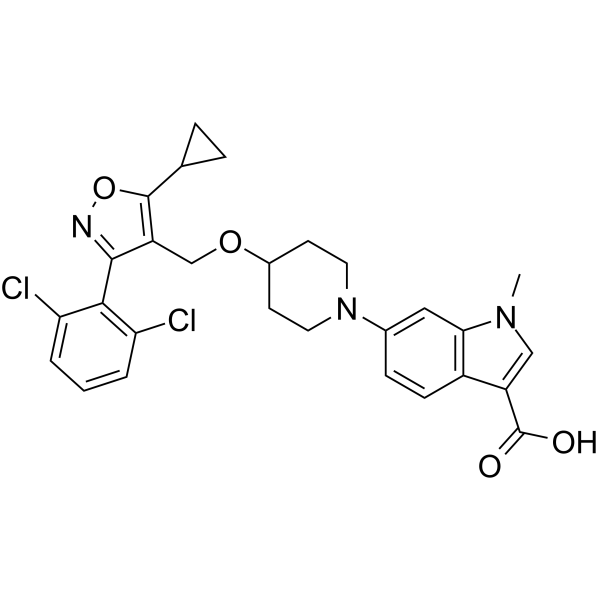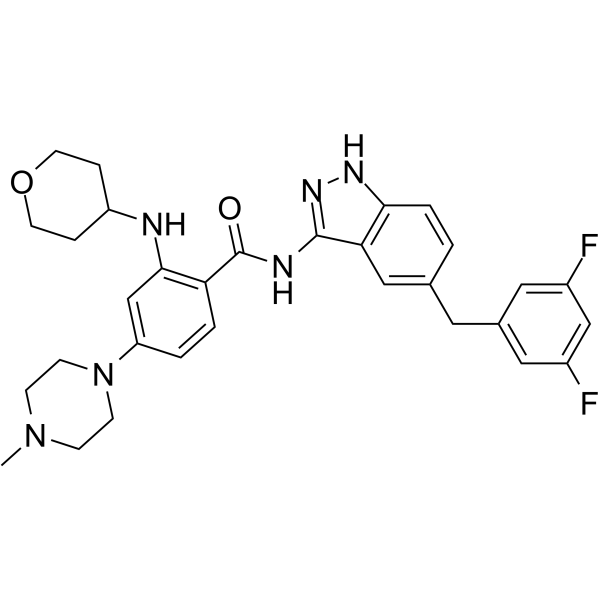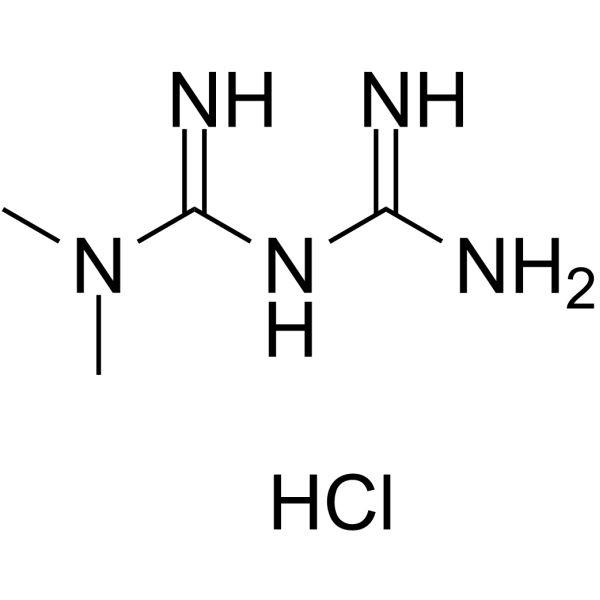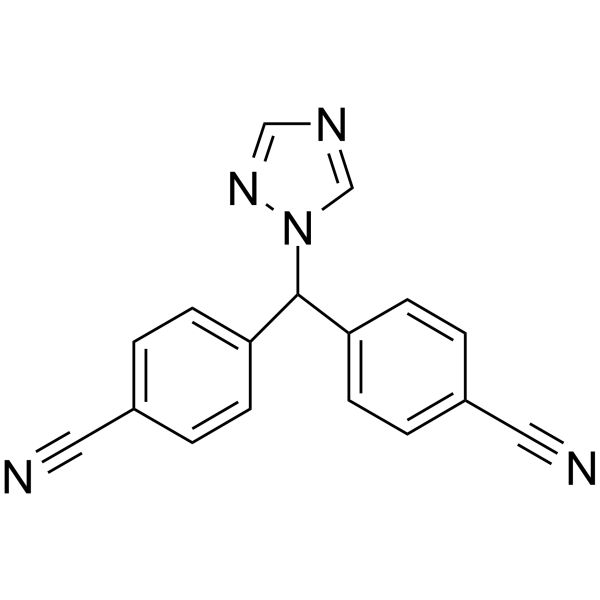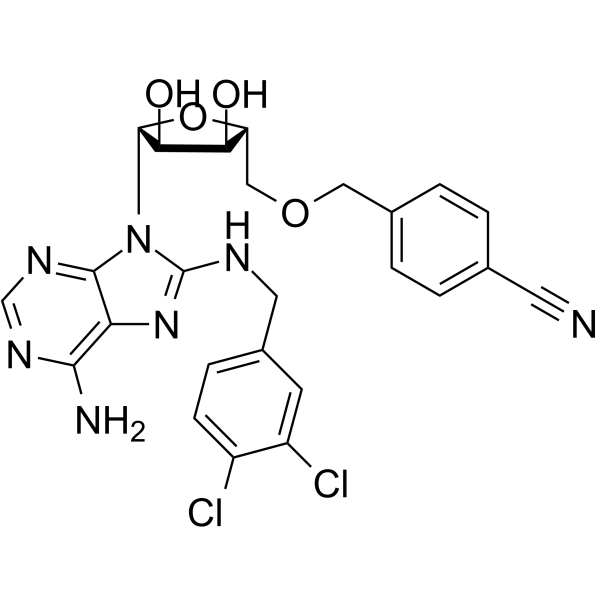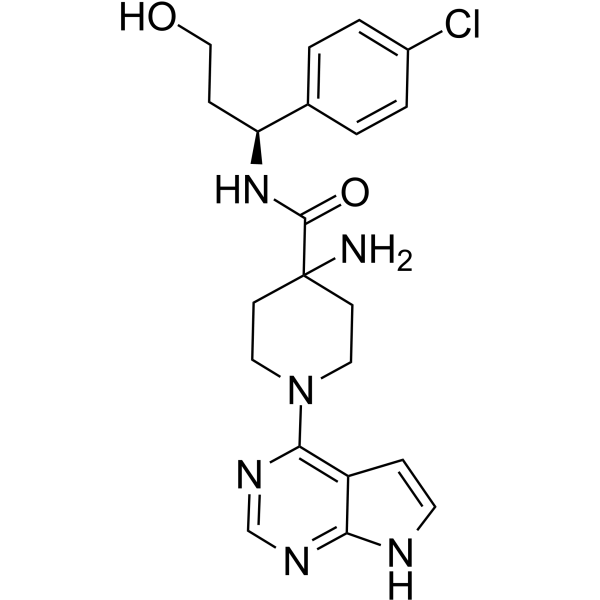|
BP12338
|
Tacrolimus
|
|
|
|
|
Tacrolimus (FK506), a macrocyclic lactone, binds to FK506 binding protein (FKBP) to form a complex. Tacrolimus inhibits calcineurin phosphatase, which inhibits T-lymphocyte signal transduction and IL-2 transcription. Immunosuppressive properties.
|
|
BP12339
|
Balixafortide
|
|
|
|
|
Balixafortide (POL6326) is a potent, selective, well-tolerated peptidic CXCR4 antagonist with an IC50 < 10 nM and it is also a potent hematopoietic stem and progenitor cell (HSPC) mobilizing agent. Anti-cancer effects. Balixafortide blocks β-arrestin recruitment and calcium flux with IC50s < 10 nM. Balixafortide shows 1000-fold selective for CXCR4 than a large panel of receptors including CXCR7.
|
|
BP12340
|
Fasudil hydrochloride
|
|
|
|
|
Fasudil Hydrochloride is a potent inhibitor of ROCK1, PKA, PKC, and MLCK with Ki of 0.33 μM, 1.0 μM, 9.3 μM and 55 μM, respectively.
|
|
BP12341
|
NUCC-390
|
|
|
|
|
NUCC-390 is a selective agonist of small-molecule CXCR4 receptor.
|
|
BP12342
|
Sertindole
|
|
|
|
|
Sertindole is an atypical antipsychotic that binds to dopamine D2 receptors and the serotonin (5-HT) receptor subtypes 5-HT1D, 5-HT2A, and 5-HT2C (Kds = 2.7, 20, 0.14, and 6 nM, respectively)
|
|
BP12343
|
Adapalene
|
|
|
|
|
Adapalene is a dual RAR and RXR agonist, utilized in the treatment of skin conditions.
|
|
BP12344
|
Valproic acid sodium salt
|
|
|
|
|
Valproate Sodium is the sodium salt form of valproic acid with anti-epileptic activity. Valproate sodium is converted into its active form, valproate ion, in blood. Although the mechanism of action remains to be elucidated, valproate sodium increases concentrations of gamma-aminobutyric acid (GABA) in the brain, probably due to inhibition of the enzymes responsible for the catabolism of GABA. This potentiates the synaptic actions of GABA. Valproate sodium may also affect potassium channels, thereby creating a direct membrane-stabilizing effect.
|
|
BP12345
|
Taurine
|
|
|
|
|
Taurine, a sulphur-containing amino acid and an organic osmolyte involved in cell volume regulation, provides a substrate for the formation of bile salts, and plays a role in the modulation of intracellular free calcium concentration. Taurine has the ability to activate autophagy in adipocytes.
|
|
BP12346
|
Norepinephrine bitartrate monohydrate
|
|
|
|
|
Noradrenaline bitartrate monohydrate is a direct alpha-adrenergic receptors stimulator.
|
|
BP12347
|
Omipalisib
|
|
|
|
|
GSK2126458 is a small-molecule pyridylsulfonamide inhibitor of phosphatidylinositol 3-kinase (PI3K) with potential antineoplastic activity.
|
|
BP12348
|
U0126
|
|
|
|
|
U0126, an effective and selective non-competitive inhibitor of MAP kinase, inhibits MEK-1 and MEK-2 with IC50 values of 0.07 and 0.06 μM respectively. U0126 inhibits autophagy and mitophagy.
|
|
BP12349
|
Tacrolimus monohydrate
|
|
|
|
|
Tacrolimus monohydrate (FK506 monohydrate), a macrocyclic lactone, binds to FK506 binding protein (FKBP) to form a complex and inhibits calcineurin phosphatase, which inhibits T-lymphocyte signal transduction and IL-2 transcription. Immunosuppressive properties.
|
|
BP12350
|
Triflupromazine hydrochloride
|
|
|
|
|
Triflupromazine hydrochloride, an antipsychotic medication, is Dopamine D1/D2 receptor antagonists.
|
|
BP12351
|
Plerixafor
|
|
|
|
|
Plerixafor, a chemokine receptor antagonist, blocks the binding of stromal cell-derived factor (SDF-1alpha) to the cellular receptor CXCR4.
|
|
BP12352
|
LY2562175
|
|
|
|
|
LY2562175 is an effective and selective FXR agonist (EC50: 193 nM).
|
|
BP12353
|
Entrectinib
|
|
|
|
|
Entrectinib is an inhibitor of TrkA (IC50: 1.7 nM), TrkB (IC50: 0.1 nM), and TrkC (IC50: 0.1 nM), as well as anaplastic lymphoma kinase (ALK; IC50: 1.6 nM) and C-ros oncogene 1 (ROS1; IC50: 0.2 nM). Entrectinib blocks proliferation of ALK-dependent cell lines, including those with C1156Y or L1196M resistance mutations, and inhibits ALK‐dependent signaling. It has been shown to inhibit the growth of a non-small cell lung Y cell line bearing an EML4-ALK rearrangement. In mice bearing various ROS1, Trk, or ALK-driven xenografts, Entrectinib has been shown to induce tumor regression.
|
|
BP12354
|
Metformin hydrochloride
|
|
|
|
|
Metformin HCl, a widely used anti-diabetic drug, has a potential function as an anti-Y medicine. It inhibits the proliferation of a variety of Y cells including colon, prostate, and etc.
|
|
BP12355
|
Letrozole
|
|
|
|
|
Letrozole is an Aromatase Inhibitor. The mechanism of action of letrozole is as an Aromatase Inhibitor.
|
|
BP12356
|
VER-155008
|
|
|
|
|
VER-155008 is a potent Hsp70 family inhibitor with IC50 of 0.5 μM, 2.6 μM, and 2.6 μM in cell-free assays for HSP70, HSC70, and GRP78, respectively, >100-fold selectivity over HSP90.
|
|
BP12357
|
Capivasertib
|
|
|
|
|
Capivasertib (AZD5363) is a new-type orally available inhibitor of the serine/threonine protein kinase AKT (IC50s: 3/7/7 nM for Akt1/2/3).
|
